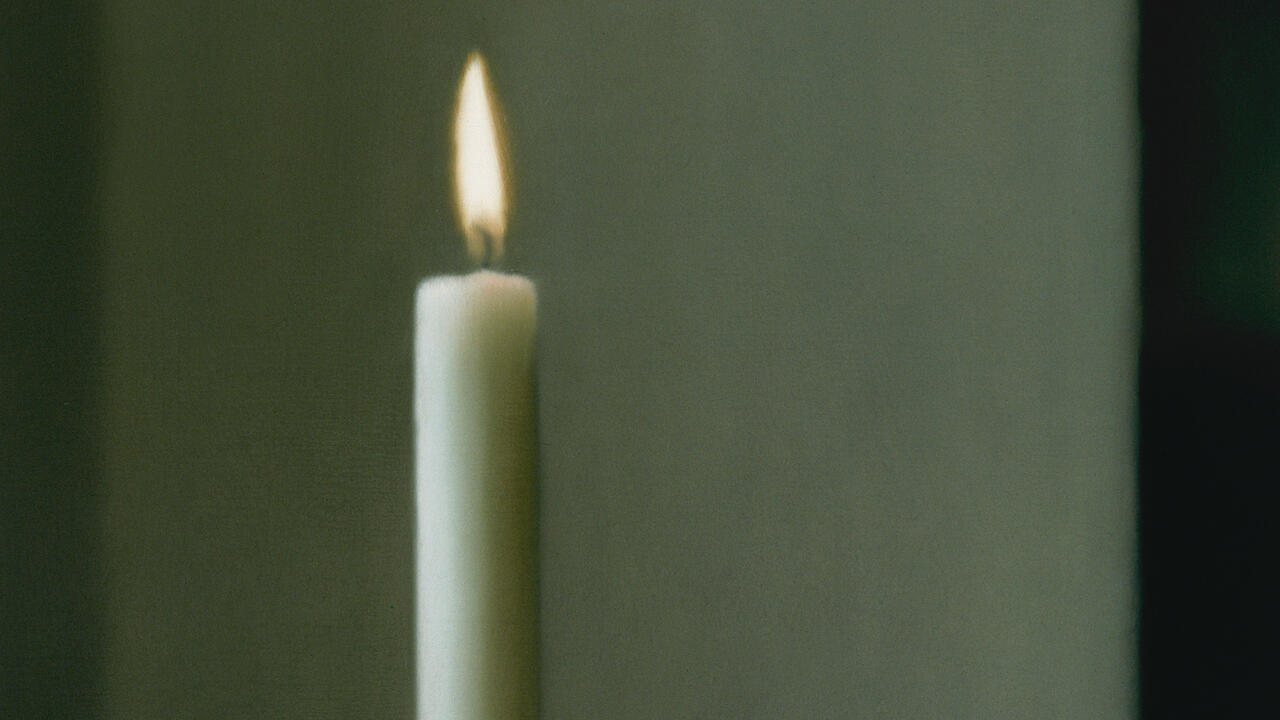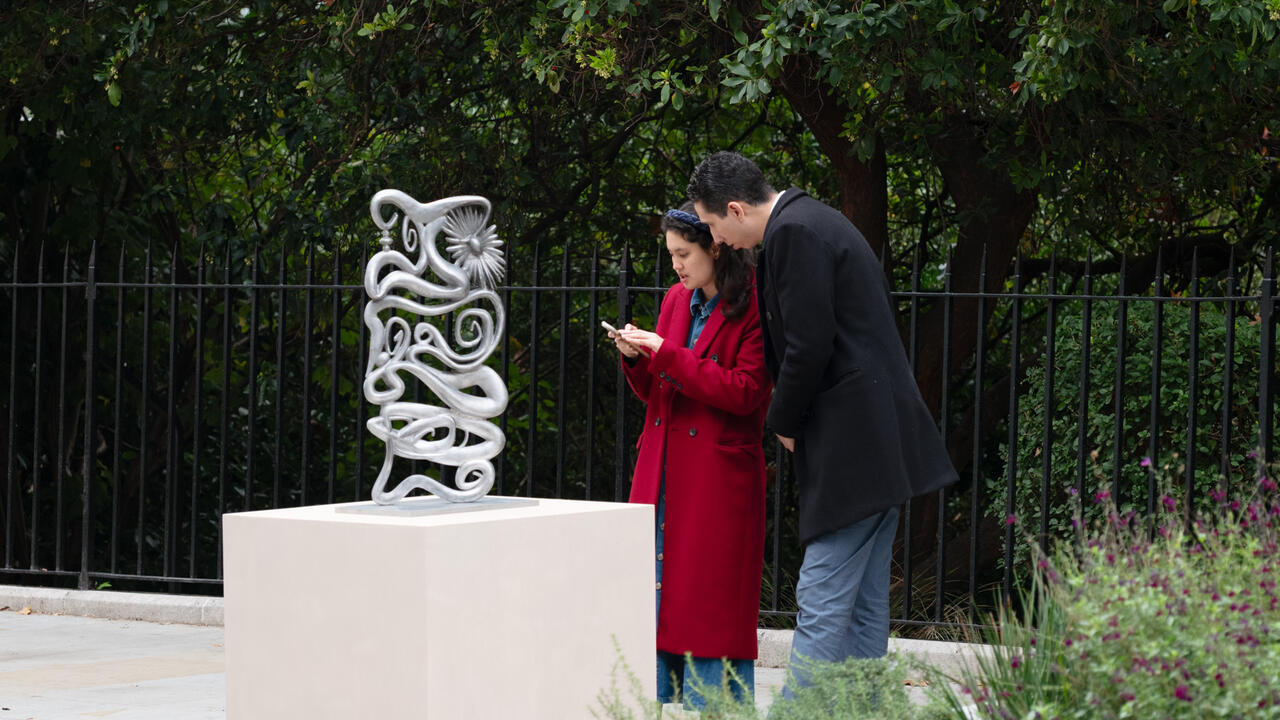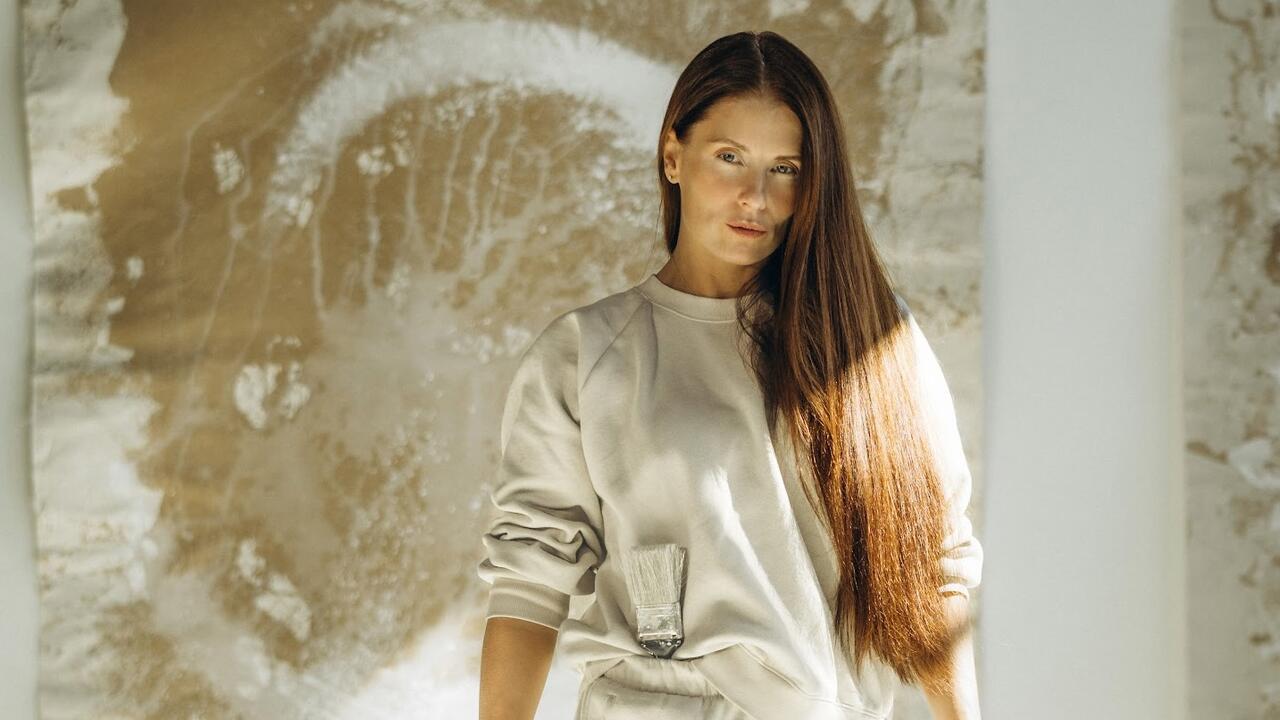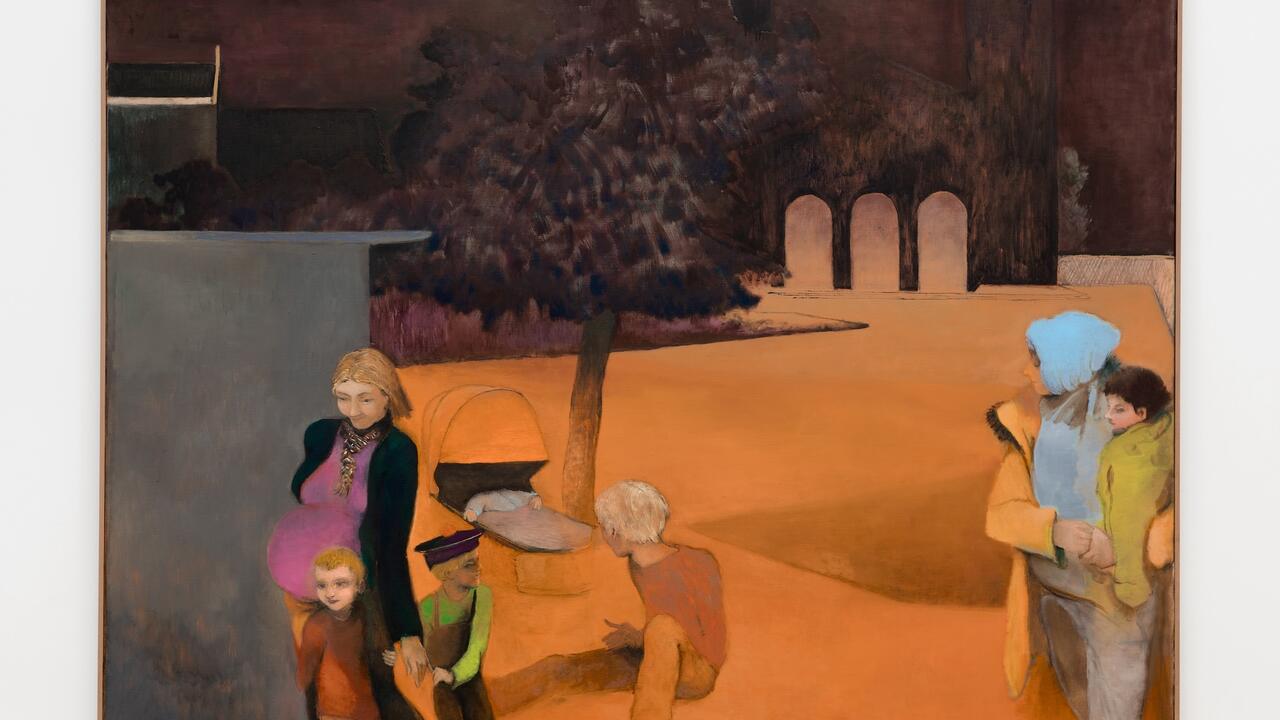The International Curator and the Ibero American
A short story
A short story
As the international curator climbs the stairs to what will be the first of a series of three visits to the Ibero American artist's studio, it strikes her how the somewhat decadent, art deco, two-storey building has that period, derivative and generic quality one so often finds in the sub-continent's fine and industrial arts. 'Metropolitan influence is hard to reproduce, let alone overcome', she thinks to herself as the Ibero American artist opens the heavy double wooden doors, leading the international curator to a spacious studio bathed in tropical sunlight. High ceilings and hard, beaten-up wooden floors, large windows that overlook a quiet cobblestone street, the sound of (what sounds like) Ibero American music from a portable CD player - this could be Bogota, Brasilia, Buenos Aires, Caracas, Guatemala City, Havana, Mexico City, San Domingo, San José, San Juan, Santiago. Yet the international curator is far from the capital, and in a split second she recalls the numerous connecting flights, the long lay-overs and delays, the dusty airports, the three-hour taxi drive, and the overrated three star hotel she was booked in to. It all triggers mixed feelings and a chain of involuntary memories.
After a brief introduction followed by a rather odd exchange of handshakes (the complimentary language of greeting does not always perfectly translate), the Ibero American artist sets off to speak of his work and the international curator listens attentively. She pulls out her sharpened pencil and her narrow, seasoned leather notebook only to realise she has few pages left. Will they be enough? As the Ibero American artist speaks, the international curator acutely poses several short, simple and straightforward questions, interrogating what seem to her the Ibero American artist's inconsistencies: What? When? Which? Who? Why? Will they be enough? Yet he gives her nothing but intangible and elusive responses, erratic and outlandish statements. However frustrated, she feels she must move on.
Now the international curator is leafing through pages and pages of drawings and sketches of intricate pieces, placed on a long wooden worktable. 'This is an installation project', she believes she hears (the accent is thick and fast). The piece requires all sorts of materials (metres of sheer voile, roses, turmeric, clove, wheat flour, annatto, barbed wire, boom boxes, potatoes, broken glass, bones, coins, yogurt caps, chairs, long-sleeved shirts, some matches, a couple of actors and a video monitor) yet the final sketch is strikingly minimal. It seems impossible to associate the materials with the finished piece, to mentally construct the installation, and the international curator wonders to what magical process it will all be submitted. On second glance she wonders if the Ibero American artist will himself be able to decipher all that is written on the heavily scribbled pages. She smiles nervously, although he doesn't seem to care much.
The international curator steps back, away, and into the adjoining room where she finds a work in progress. The Ibero American artist's assistant is piecing together different parts of an immensely complex object made of numerous artefacts and materials. She is able to identify some guava candy, a few plastic shopping bags, a wooden cabinet, a wooden boat, a dead frog, a video monitor, a see-through cross, a bloody substance, a pair of skateboards, a mattress, a piece of embroidered fabric, a pile of business cards, a sword. She thinks of the sign and its signification, the signifier and the signified; she considers Impressionism and Expressionism, Dada and Surrealism, Pop and Op, Conceptual Art and Minimalism, Performance and Body Art, Appropriation and Simulation; she returns to Wagstaff, Warburg, Weinberg, Welsh, White, Wickhoff, Wiegand, Winckelmann, Wolfflin, Wollen, Wollheim, Wood, Worringer. Yet all clues and references are loose threads and the international curator nods and quietly and slowly steps back to the studio's main room to find the Ibero American artist scribbling more notes and crossing out other ones on the pages of the impossible installation project. He drops the dull pencil and walks towards the couch next to the windows. She follows him. They sit down. 'Tell me about your influences,' the international curator inquires in her perfect Metropolitan accent, and he tells her about Magritte, Maiolino, Malevich, Maneiro, Márquez, Matisse, Matta, Medeiros, Medina, Meireles, Menendez, Moholy-Nagy, Mondrian, Motherwell. The international curator is eager to piece together the long list of names, map out influences and affinities, antecedents and predecessors, and avidly scribbles them all down. 'Meireles with double "l"? Márquez with an accent?' She counts what is left of the pages of her narrow notebook: five.
The following morning the international curator wakes up at five a.m., still suffering from jet lag despite the previous night's melatonin. In bed she grabs her narrow notebook (strategically placed by her bedside table in the event of a mid-night insight) and gazes at the previous afternoon's long list of names. Concentrated and confused, she gets up determined to solve the puzzle. She thinks of her years of academic training, of militant criticism, of rigorous international curatorial practice, as the tropical sun rises behind the thick and cheap hotel curtains. She draws arrows from one name to the other, marks some with an asterisk, others with two. 'Could I have forgotten a name, the missing link in this chain of influences and affinities, antecedents and predecessors?' She's reaching for her pencil sharpener when the wake-up call rings. It's breakfast time and as she draws the curtains the bright tropical sun's rays blind her, but just for a split second.
A visit to a local gallery is scheduled for ten a.m., and the Ibero American art dealer collects the international curator at the hotel and drives her through narrow two-way cobblestone streets. After many bumpy twists and turns, corners and cross streets, she has lost her sense of direction, and no longer knows where North and South, nor East and West are. Finally at the gallery, the international curator performs a familiar role: she goes through dozens of slide sheets and bombards the Ibero American dealer with questions: How old is the artist? What did the artist do before? What is the artist doing now? When was the artist's last show? The title? The materials? The scale? How heavy? How many? How often? How much? The international curator leaves the gallery with several exhibition catalogues and folders (most of which she will leave behind in the hotel room), some slide sheets and a list of four names.
The afternoon of the second visit will run more smoothly, she predicts. The international curator has enumerated several key questions that will illuminate obscurities, clarify issues, elucidate doubts, decipher enigmas. She has thought of all possible theoretical and intertextual references and in her interrogation quotes Bataille, Blanchot, Bhabha, Bloch, Bloom, Benjamin, Bakhtin, Bourdieu, Barthes, Baudrillard, Baudelaire. The Ibero American artist nods, frowns, smiles, sometimes laughs loudly (at a particularly piercing passage of Barthes, at a curiously cryptic citation of Bakhtin). She circles some names and underlines others, makes more and more notes, and realises she has misspelled Bhabha and has only a couple of pages left. 'Maybe it's the heat', and she glances at the broken fan. 'Maybe it's the language', and she questions what, until now, she considered to be her absolute command of and perfect fluency in the Ibero American idiom.
The international curator walks towards the large open windows, breathes the tropical air deeply and grabs onto the neo-classical ferronerie of the balcony in search of balance and grounded support. After a few minutes, she turns and sees a passage to a section of the studio that she had not yet noticed. She walks steadily towards it, self-assured of her path, self-confident of her mission, self-convinced of her task, and she enters undiscovered rooms to find the Ibero American artist, brush in hand, gazing deep into pots of coloured liquids. She looks at the walls and sees an immense mural, its colours so light and subtle, its lines so thin and sinuous. She scrutinises its palimpsest quality closely and ponders over form and content, syntax and grammar, composition and colour, surface and support, and among many marks and spots, smudges and blotches, stains and blemishes, she detects designs of various sorts: silhouettes of human figures, nails and hammers, teeth and bones, clouds and vapours, architectural drawings, a swan, a bird, a fairy-tale personage. She thinks to herself: abstract or figurative? Foreground or background? Acrylic or oil? Charmed, the Ibero American artist observes the international curator captivated by what is quite simply the layered and scraped off, weathered and peeling, old and seasoned walls of his studio.
Back at the hotel the international curator has a light dinner after which she cautiously takes three melatonins, though a counter-effect will stir her at four a.m. At five a.m., once more, she sits down at the narrow desk of the overrated Ibero American hotel room, opens the windows, and with her sharpened pencil at hand she studies her own scribbles. The marks have now escalated to form a complex and intricate language and grammar of their own: single, double, and triple asterisks, arrows, dots, exclamations, interrogations, stars, outlines, underlines, initials from A to Z, pencil prints from H to B, all juxtaposed with familiar and foreign names, places, concepts, periods, movements. She thinks of her specialisation in Ibero American Art and Letters, her several exhibitions curated, her countless articles written, her many papers read, her few books published, her graduate seminars taught, her double appointment in the Ibero American Letters and Ibero American Arts departments. However perplexed, she feels she must move on.
On the last day of her visit the international curator walks directly to the slightly uncomfortable couch. This time duly prepared she wears light clothes and carries a bottle of mineral water from which she takes small though constant sips. This is her last chance, her ultimate opportunity to unveil, to discover, to decipher. She has chosen her words in a meticulous, fastidious, painstaking fashion; rearranged the question countless times in her head; rehearsed its tone and diction in the most precise and effective manner, its accent in the most suitable fashion: 'Tell me about your childhood'. In the search for her big picture, her general panorama, her grand narrative, her ultimate text, she is alert to every detail, asks for more, always on the lookout for a revelatory sentence, a piece of evidence, a sign, an indication, a symptom. Her theoretical ammunition is broad and well grounded: the I and the je, the yo and the eu, perversion and repression, desire and demand, neurosis and psychosis, condensation and displacement, metaphor and metonymy, primary process and secondary process, ego ideal and ideal ego. Yet it all seems rather inadequate and insufficient, imprecise and impractical. She gets up abruptly and politely says goodbye.
In the last phone call, still at the hotel, the international curator offers the Ibero American artist the exhibition, and with it the grant, the tickets, the trips, the catalogue, the lecture, the studio visits, the dinner parties, the cocktails. In the taxi to the dusty airport, reflecting on the previous days, recalling the afternoons at the Ibero American artist's studio and the insomniac hours at the overrated hotel room, she decides to propose to the museum's committee the acquisition of the Ibero American artist's mural. As she opens her seasoned leather notebook to record her final analysis, her last words, her ultimate sentence, she realises all the blank pages are gone.














